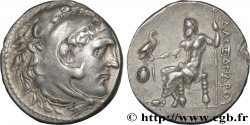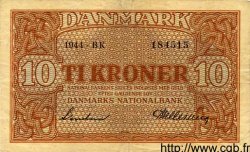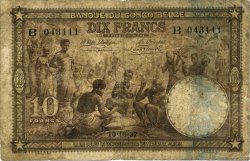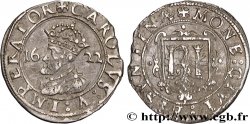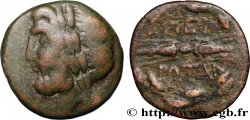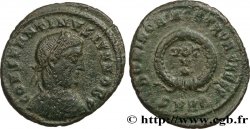MONNAIES 38 (2009)
Starting price : 350.00 €
Estimate : 550.00 €
Realised price : 350.00 €
Number of bids : 1
Maximum bid : 386.00 €
Starting price : 350.00 €
Estimate : 550.00 €
Realised price : 350.00 €
Number of bids : 1
Maximum bid : 386.00 €
Type : Tétradrachme
Date: an 23
Mint name / Town : Pergé
Metal : silver
Diameter : 31 mm
Orientation dies : 12 h.
Weight : 16,57 g.
Rarity : R1
Coments on the condition:
Exemplaire sur un flan large et ovale, parfaitement centré des deux côtés. Portrait magnifique. Usure superficielle au revers. Micro rayure devant la tête de Zeus. Patine grise avec des reflets métalliques
Predigree :
Cet exemplaire provient de la Vente GM 52, 1990, n° 193
Obverse
Obverse legend : ANÉPIGRAPHE.
Obverse description : Tête d'Héraklès à droite, coiffée de la léonté.
Reverse
Reverse description : Zeus aétophore assis à gauche, les jambes croisées, nu jusqu'à la ceinture, tenant un aigle posé sur sa main droite et un long sceptre bouleté de la gauche.
Reverse legend : ALEXANDROU/ KG
Reverse translation : (d’Alexandre).
Commentary
Mêmes coins que l’exemplaire de l’Ashmolean Museum d’Oxford (n° 2873). Même coin de droit que l’exemplaire du British Museum (MP. 3927b).
Same dies as the copy in the Ashmolean Museum, Oxford (no. 2873). Same obverse die as the copy in the British Museum (MP. 3927b)
Same dies as the copy in the Ashmolean Museum, Oxford (no. 2873). Same obverse die as the copy in the British Museum (MP. 3927b)








 Report a mistake
Report a mistake Print the page
Print the page Share my selection
Share my selection Ask a question
Ask a question Consign / sell
Consign / sell
 Full data
Full data
